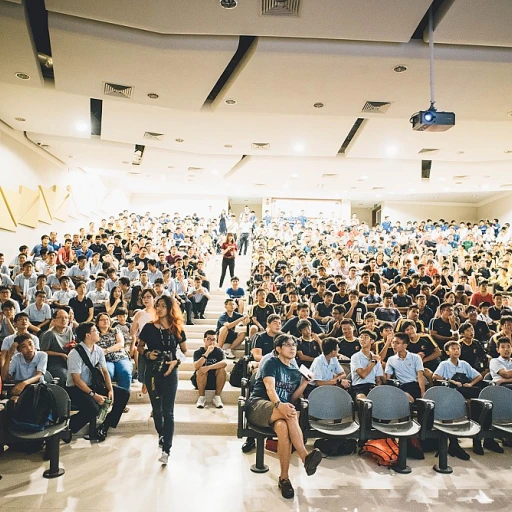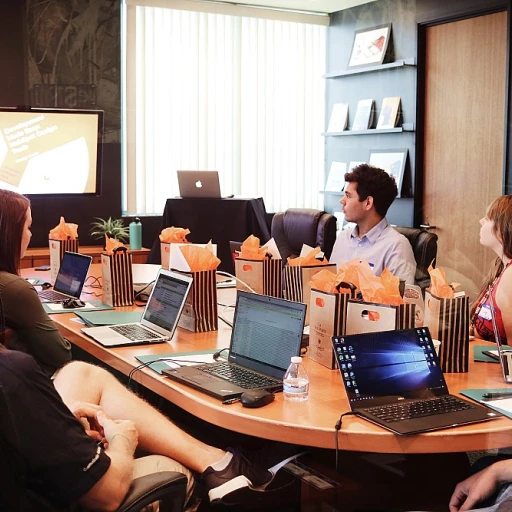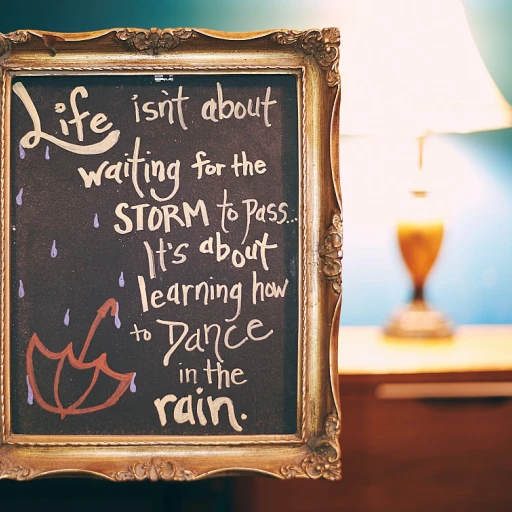The Rise of Digital Learning Platforms
Embracing the Shift to Digital Learning
The way we learn has changed dramatically with the rise of digital tools. From students to seasoned professionals, everyone is finding new ways to learn online. Digital learning platforms like Google Classroom and others have become essential for teachers and students alike, offering a wide range of educational resources that are just a click away.
Why Digital Learning is Gaining Popularity
One reason digital learning is so popular is its flexibility. Students can learn at their own pace, and teachers can create interactive content that keeps everyone engaged. Whether it's through video tutorials or real-time quizzes, digital tools help make learning more interactive and enjoyable. This shift is not just about convenience; it's about creating better learning experiences for everyone involved.
From Traditional to Digital: A Personal Story
Take Sarah, a high school teacher who once relied solely on textbooks and face-to-face lectures. She found that incorporating digital tools into her teaching not only helped her students but also transformed her classroom into a more dynamic learning environment. By using technology tools, Sarah was able to track student progress in real time and provide immediate feedback, something she couldn't do with traditional methods.
Digital education is not just for the classroom. It's a tool that can be used in various settings, from corporate training to personal development. The ability to access educational content anytime and anywhere has opened up new opportunities for lifelong learning. For more on how continuous learning can unlock your potential, check out this insightful article.
The Role of Technology in Education
Technology has become an integral part of education, providing tools that help teachers create more engaging lessons and students to learn more effectively. From interactive simulations to collaborative platforms, the possibilities are endless. As digital tools continue to evolve, they will play an even bigger role in shaping the future of education.
Stay tuned for more insights on how digital tools can benefit continuous learning and help you master the art of lifelong skill development.
Benefits of Using Digital Tools in Continuous Learning
Why Digital Tools Matter in Continuous Learning
Digital tools have become game-changers for both students and teachers in the classroom and beyond. They provide a wide range of resources that make learning more accessible and engaging. Whether you're a student trying to grasp new concepts or a teacher aiming to create interactive lessons, technology offers something for everyone.
Benefits for Students
Students today have the advantage of using digital tools that cater to different learning styles. Video content, for instance, can help visual learners better understand complex topics. Tools like Google Classroom allow students to access educational materials anytime, anywhere, making distance learning more feasible.
Real-time feedback is another perk. With platforms like Google Forms, students can receive immediate responses to quizzes, helping them track their progress and focus on areas that need improvement.
Benefits for Teachers
For teachers, digital tools offer the ability to create interactive lessons that capture students' attention. Platforms like Kahoot and Quizlet make it easy to turn traditional teaching methods into fun, engaging activities. Teachers can also use analytics tools to monitor student progress and adjust their teaching strategies accordingly.
Flexibility and Accessibility
One of the biggest advantages of digital learning tools is their flexibility. Whether you're in a traditional classroom setting or participating in virtual learning, these tools adapt to your needs. This flexibility ensures that education is not confined to a physical location, making it easier for everyone to access quality learning experiences.
Building Skills for the Future
Digital tools are not just about convenience; they also prepare students for the future. As technology continues to evolve, being comfortable with digital platforms is a skill in itself. By integrating these tools into daily learning, students and teachers alike can stay ahead of the curve. For more insights on how lifelong learning can boost career advancement, check out this resource.
Top Digital Tools for Enhancing Learning
Make the Most of Digital Tools
Digital tools have become an essential part of continuous learning, and several stand out for their effectiveness. Starting with Google Classroom, which remains a staple in online education, this tool offers a platform for teachers to create, share, and manage learning content efficiently. Google brings the classroom experience to your device, making it ideal for a wide range of students, from schoolchildren to adult learners. Another great tool is Khan Academy, where both teachers and students can find a treasure trove of educational resources. From math to science, this free online platform perfectly complements real-time learning in an actual classroom and offers video lessons that make understanding complex topics much easier. If you're into more interactive content, Quizlet provides a fun way to engage with educational material. With flashcards and quizzes, Quizlet helps students solidify their understanding through repetition and practice, which can aid in more effective distance learning. For those interested in broadening their knowledge with a variety of courses, Coursera links learners to educational experiences from leading universities and companies. This tool offers courses that are not only informative but also tailored to the needs of self-driven learners. Among these, a particularly unique platform is Duolingo. Known for teaching languages, its gamified approach makes learning feel like play, perfect for students of any age itching to pick up a new language skill. By utilizing these tools strategically, both students and educators can enrich their learning experiences. In this ever-growing age of technology, knowing the right digital tool can turn challenges into opportunities, helping teachers create and students achieve more in their educational journey. Check out different insights on building skills for tomorrow's workforce for further reflection on adapting these tools.Integrating Digital Tools into Your Learning Routine
Making Digital Tools Part of Everyday Learning
Bringing digital tools into your daily educational journey can seem a bit overwhelming at first, but it's all about finding what works best for you. Let's explore how you can make them a seamless part of your learning routine. First off, try setting specific times in your schedule for engaging with digital resources. Online platforms and video content can be easily accessed during lunch breaks or while commuting. This way, you're utilizing pockets of time that might otherwise go to waste. mDon't forget about the magic of Google Classroom. Teachers have found it an invaluable tool for creating a structured learning environment. It allows both teachers and students to keep track of assignments and communicate in real time. This creates an interactive space where the learning experience feels natural and less like a chore. For those who love visuals, using interactive tools like educational videos helps break down complex topics. They engage you in a way that static resources might not. Combine them with real-time discussions, even virtual classes, to boost comprehension. Now, let’s talk apps. From language learning to coding, there's an app for almost any subject. These apps often incorporate game-like elements that make education fun and incentivize progress, keeping both the student and teacher engaged. Don’t underestimate the power of collaboration tools either. Platforms that support group projects or peer-to-peer learning offer a sense of community. Whether you're prepping for an exam or working on a group assignment, they keep everyone on the same page. Lastly, keep a radar for your student's progress. Digital education tools often come with analytics to help track where you excel or need more time. This reflection aids continuous improvement, making learning a thoroughly positive experience. These are just some of the ways digital tools can blend into your study groove. Remember, consistency is key. With regular use, they'll start to feel like second nature, kicking your learning experiences up a notch.Overcoming Challenges in Digital Learning
Facing Hurdles in the Digital Classroom
Let's talk about some of the hurdles you might face when diving into digital education. While technology can offer a treasure chest of learning tools, it can also be a bit of a maze with glitches, distractions, and the ever-looming digital burnout. It's no secret, dealing with technical issues like unexpected software crashes can put a damper on the learning experience. Frequent updates or connectivity problems can disrupt student progress, nudging both students and teachers toward frustration.Taming the Technology Monster
First things first, it’s essential to keep your digital tools and resources up to date. Most platforms, like Google Classroom, regularly roll out improvements aimed at creating a smoother learning path for students and teachers alike. Engaging with virtual learning also calls for a deliberate strategy to keep distractions at bay. It might be wise to set specific 'tech-free' times. A supportive online community can be a gift when technology throws unexpected hurdles. Teachers and students often share practical solutions or tips on forums and through educational content videos. Forging these connections not only helps troubleshoot issues in real time but also nurtures an interactive learning community.Balancing Digital with Real-World Interactions
Teaching learning in the digital realm demands a balance. While technology tools can create interactive lessons teeming with possibilities, human interaction remains irreplaceable. Integrating face-to-face sessions, even if virtual, offers opportunities for real-time feedback and understanding, deepening the classroom connection. Students, remember to step away from the screen and engage in traditional learning practices like reading physical books or handwritten journaling to refresh your mind. Ultimately, the goal is to create a wholesome learning experience that respects both digital and human elements in education. Taming technology hiccups while ensuring meaningful human connections can help digital tools blend seamlessly into your educational journey, transforming hurdles into stepping stones for growth.Future Trends in Digital Learning
What's in Store for the Future of Digital Learning?
The way we learn is changing fast. As we continue to embrace technology, the influence of digital education only grows stronger. We're seeing constant innovations and exciting new trends that reshape how students, teachers, and educational platforms interact. Let's take a look at some trends that are gaining momentum:- AI-Powered Learning Tools: With advancements in artificial intelligence, educational content is becoming more personalized. AI can offer tailored lessons to suit individual learning styles, making it easier for both students and teachers to optimize their learning experiences.
- Virtual and Augmented Reality: These technology tools are bringing digital education into the real world. By allowing students to explore immersive environments, VR and AR can make complex subjects more relatable, transforming traditional classroom approaches into real time interactive adventures.
- Micro-Learning: Busy lives call for bite-sized learning experiences. Micro-learning offers small, digestible chunks of information, perfect for enhancing your knowledge on the go. This makes digital learning more accessible and less daunting.
- Interactive Video Content: Video has long been a go-to in education, but interactive elements are now taking it to the next level. This enables students to engage actively with the content, track their progress, and better grasp difficult concepts.
- Blockchain in Education: Boasting security and transparency, blockchain technology is stepping into the education arena. Its primary use includes secure record-keeping of certificates and learning achievements, offering a reliable resource for verifying skills.
- Global Learning Communities: Digital platforms are breaking down geographic barriers, connecting students and teachers worldwide. Platforms like Google Classroom are fostering global classrooms, allowing resources and teaching strategies to be shared like never before.












